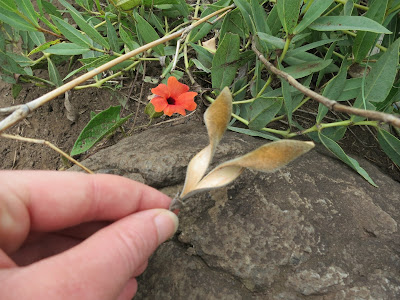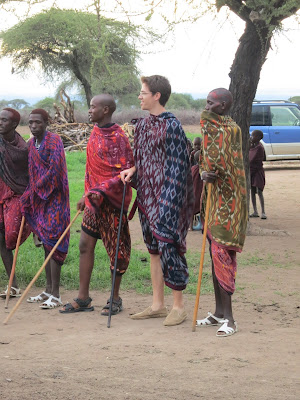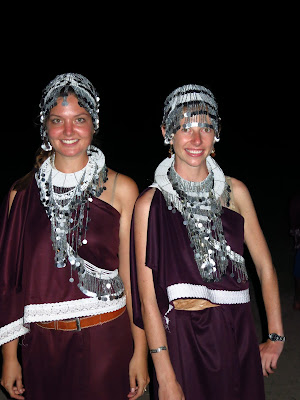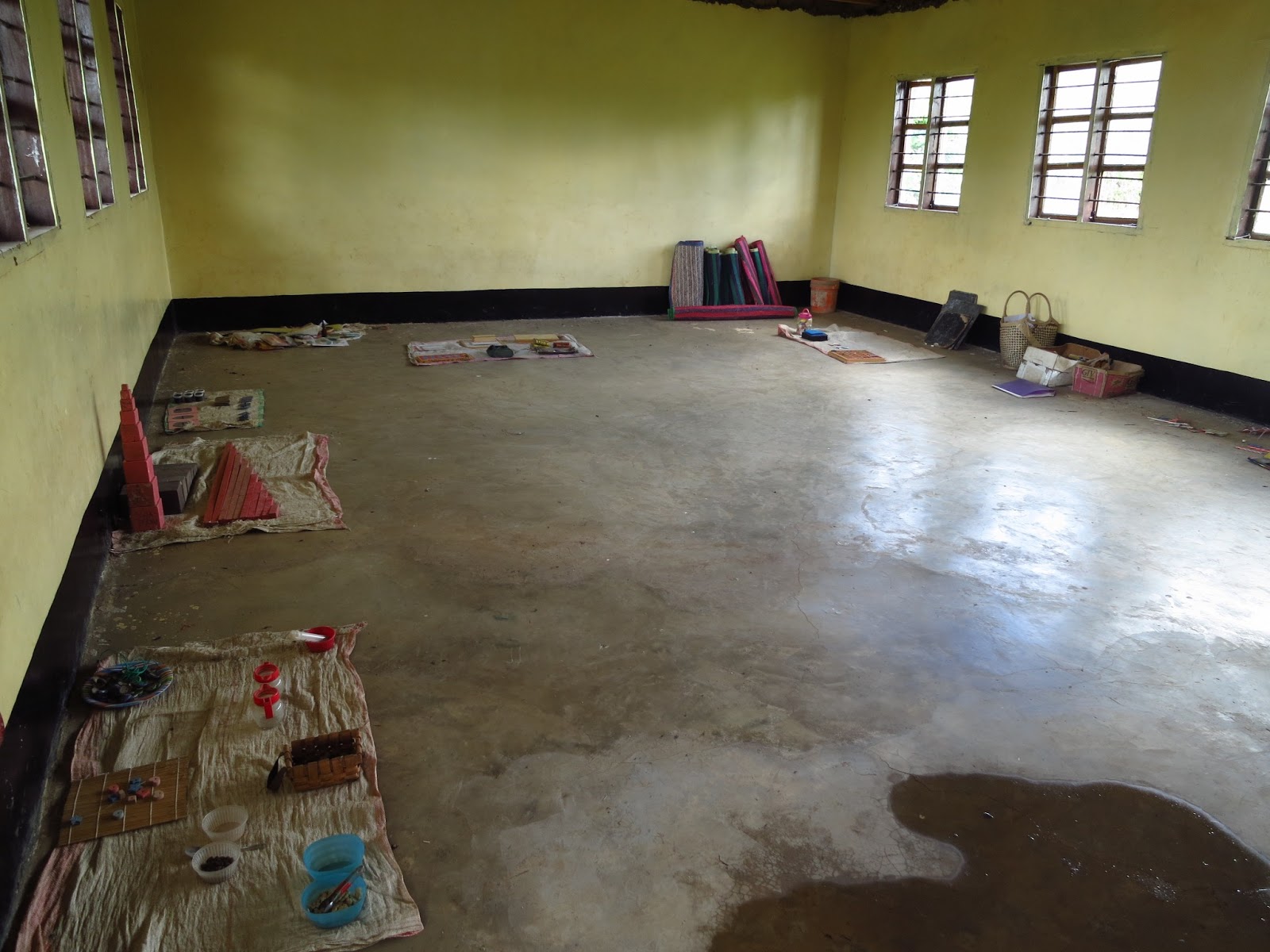It
was up to me to determine how I wanted to structure the course—which
in itself was tricky for me, as I had never done anything like this
before. I received some guidance from Pam, the in-house (but
currently in Canada) Montessorian who is usually the one who teaches
the trainings here. I structured my plans around the topics she
normally includes in an attempt to create as much consistency as
possible between her training and mine. I also planned to show all of
the materials in the Swahili Montessori manual The Olive Branch has
created for its teachers.
I spent the first two weeks covering the handful of vital theory
topics, discussing the materials and demonstrating presentations
(actually it was two partial weeks
as we had a national holiday and some other activities to plan
around). All of this was translated into Swahili by either Daudi (the
first week) or Humphrey (the remaining weeks), who The Olive Branch
provided for me and who were both a lot of fun to work with.
Now
in our third week, we have asked the children from Azimio-Mapula—the
community where the training is taking place—to join us. Most, if
not all of them came to school there under the guidance of the
previous teacher, who wasn't there long and who quit unexpectedly in
November. None of the children have attended any school since then.
This
week we are doing “practice teaching,” Tanzania style. The
children arrive anywhere between 8 and 9 and we get started whenever
all (or most) of the teachers show up. Being on time is something you
eventually stop worrying about here because it rarely happens.
Getting from point A to point B is so trying and treacherous that
there's really no telling when anyone will arrive. We all do the best
we can. We stay flexible and we make do.
On
our first day of practice teaching, I planned to split the 40 or so
children up into groups of six or seven per teacher, and allow each
teacher to work with their own group. By the time 9 o'clock rolled
around, five children had showed up. Another trickled in later
bringing us to a grand total of six children to work with (for the
four teachers who had made it that day). We made do, and it turned
out to be plenty for them to handle on day one.
The
children got picked up and pushed from place to place; the teachers
got constructive criticism and a reminder about our lecture on
“Independence.” One tried showing a very young child the “cards
and counters” and they got a re-explanation of how each lesson
builds on the previous, and how yes,
they
do
have
to be given in the right order. Another dismissed all the children
from her group and once, and we talked again
about dismissing them one by one to chose their next lesson.
On
day two, eight children came and I insisted only two teachers
interact with them at a time. The rest were to sit and observe and
try their darnedest not to get involved until it was their turn. The
classroom began to look like it should, with many children working at
their mats and a few being led in a group. I saw numerous accounts of
true concentration, most of which got quickly interrupted by an eager
teacher wanting to give another lesson. We talked about this, too.
I
find my self repeating a lot, rephrasing a lot (and face-palming a
lot). I've also been reflecting a lot on what I did well in the
course of the training, and what I could have done better. Just as
the children are a mirror of our actions in the classroom, these
teachers are a reflection on me, and how successfully I've done my
job here. It's especially interesting for me to get to see which
things they absorbed from the previous two weeks, and which either
got lost in translation or went in one ear and well...ya know.
It's an uphill
battle, for certain, but we are
making progress, and that's about all I can hope for. I feel
confident that these six people will make wonderful teachers for
their communities, should they have the dedication to stick with it
for a while. No one comes out of training an outstanding Montessori
teacher, and they will be no exception. As I've told them many times
these past few weeks, being a fantastic teacher comes with time and
experience. No one expects greatness right away (thank goodness!). I
hope the same will prove true for me in the coming months in
Thailand, as I attempt what I've begun to think of as "Montessori
Crash Course 2.0".

























































